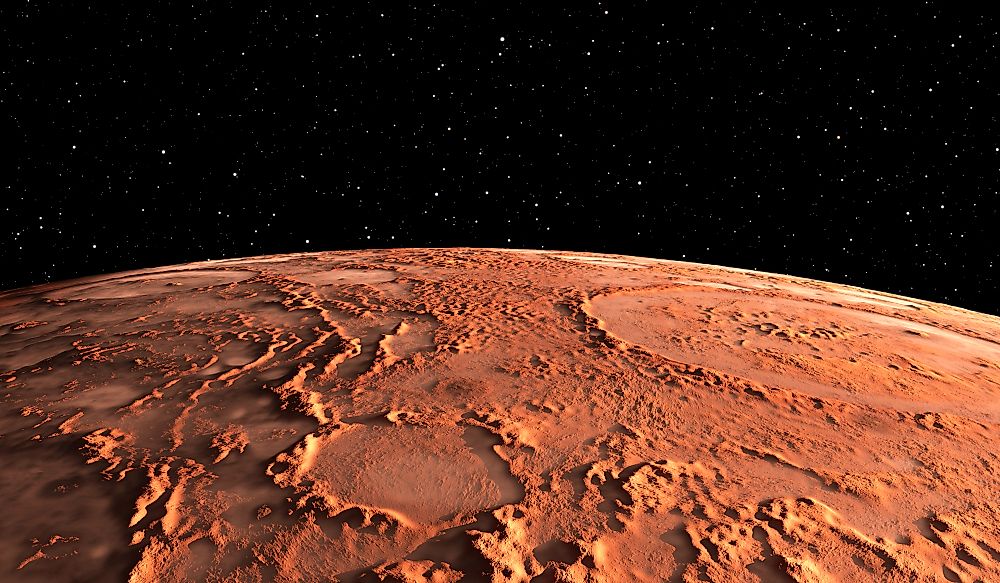What is Mars Made Of?

Mars is the fourth planet from the sun. It is the most studied planet after Earth because of speculations that there might be water beneath the surface and its similarities to Earth. Mars is also known as “the Red Planet” because its surface is reddish in color. The surface consists of red rocks and a thick layer of oxidized iron dust.
Dusty Crust Of Mars
Mars is covered by dust because it lacks vegetation and water on the surface. The soil on the surface is composed of potassium, magnesium, sodium, and chloride. The crust is between six and thirteen miles thick.There are no tectonic plates on Mars.The surface has huge volcanoes that were formed by successive eruptions millions of years ago.
Mantle And Core Of Mars
Evidence suggests that Mars is a dormant planet that has not witnessed an eruption for millions of years. The planet’s mantle is dormant, unlike the Earth's mantle which is constantly reforming. The mantle of Mars is made up of iron, magnesium, oxygen, and silicon. Unlike the Earth's mantle that is solid, the mantle of Mars consists of soft rocks. The mantle is between 770 and 1,170 miles thick. Mars has a solid core that is between 930 and 1,300 miles in diameter.The core is dormant and therefore lacks a magnetic field that protects the planet from space radiation. Instead, Mars produce sporadic field lines that have been nicknamed “Christmas Lights " because they are of no benefit to the planet. Radiation makes the planet uninhabitable without protective wear.
Atmosphere And Water Of Mars
Liquid water cannot exist in mars for a long because it is too cold and the surface is bare. However, physical features on the surface suggest that at one point water flowed on the surface. Water exists on the planet as ice in the soil and ice sheets beneath the polar regions.The atmosphere is too thin to support life and also consists of 95% carbon dioxide. Mars experiences frequent giant dust devils that routinely blow dust into the atmosphere. In some instances, dust storms cover the planet wholly or partially. It frequently snows on the red planet, but the snowflakes is made up of carbon dioxide. Snowflakes in the North Pole are larger and frequent compared to the South Pole.
Life On Mars
Mars cannot sustain life as it exists on earth. However, researchers are finding evidence that suggests that the planet might have been habitable in the past.The Curiosity Rover has discovered elements that are crucial for the development of life and the presence of water has led to the speculation that life might actually exist beneath the polar regions.











